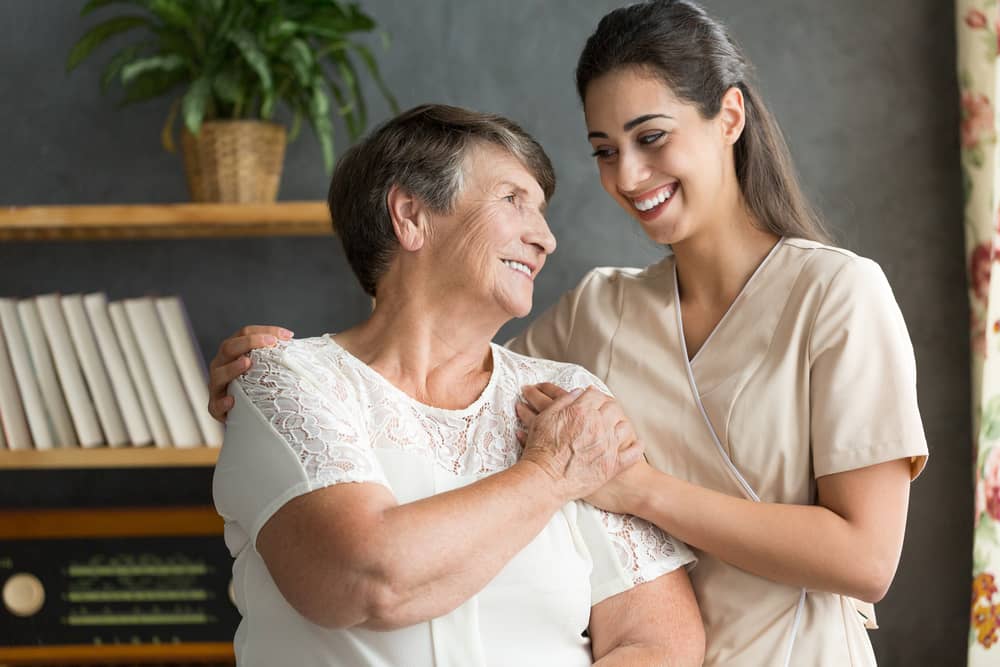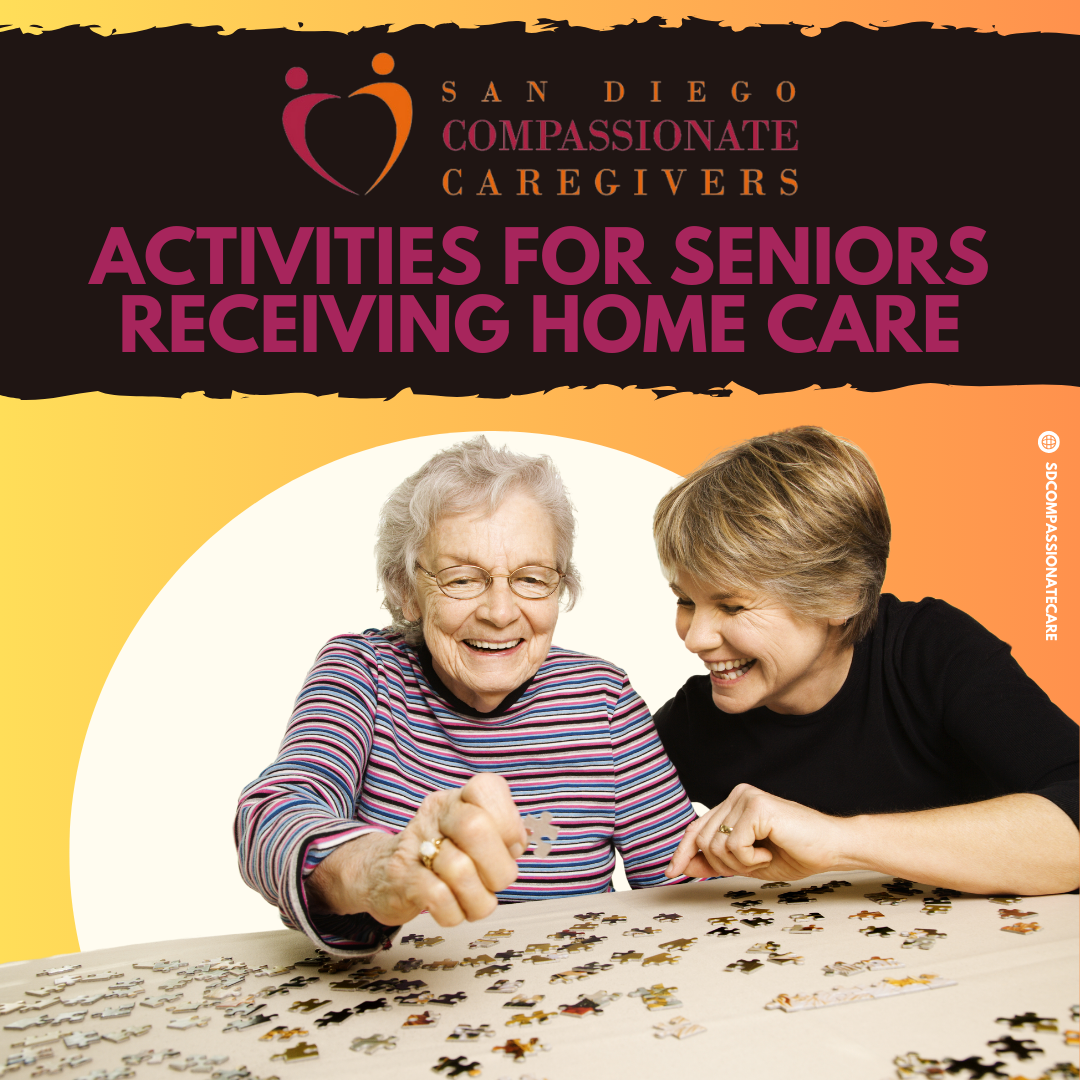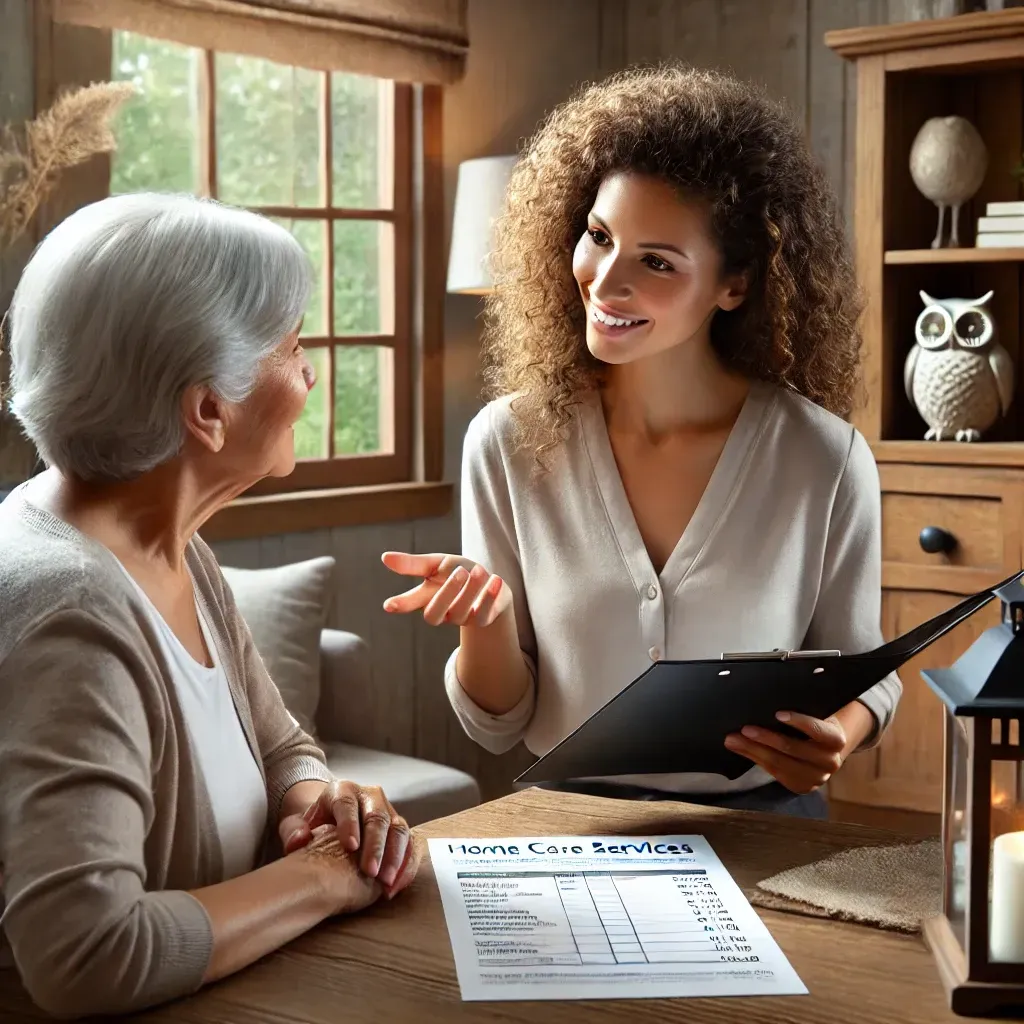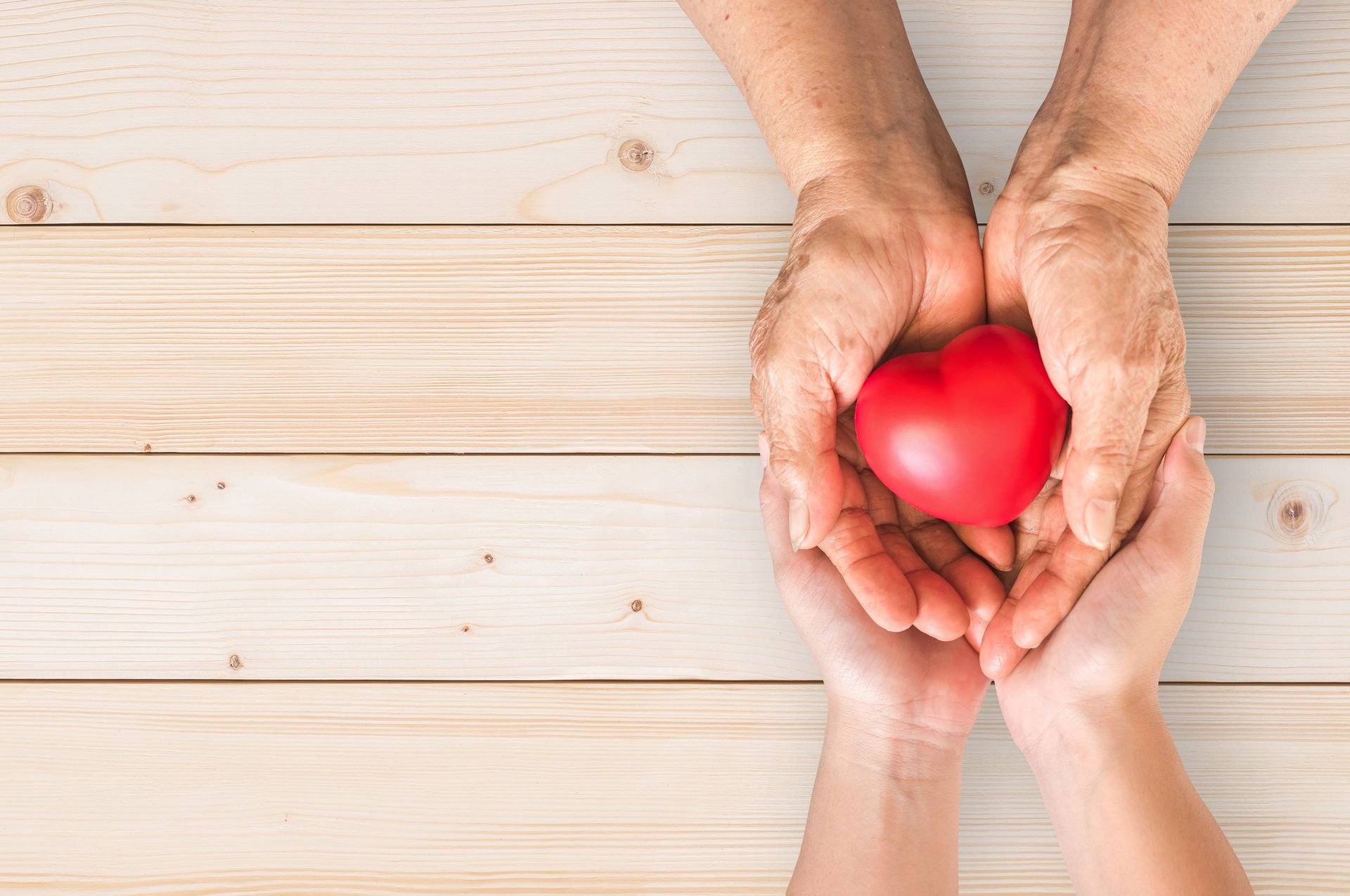Blog

Caring for a loved one with dementia is both a profound act of love and a journey filled with emotional and practical challenges. As dementia progresses, maintaining a safe, supportive, and familiar environment becomes crucial—and for many families, this means turning to home care. In this blog, we’ll explore how home care can support dementia clients, what to consider when creating a care plan, and tips to help caregivers provide compassionate, effective support.

As our loved ones age or face health challenges, the topic of in-home care often becomes a necessary conversation. However, discussing this sensitive subject can be emotionally charged, bringing up concerns about independence, finances, and quality of life. Whether you’re approaching this discussion with an aging parent, a spouse, or another family member, it’s important to handle it with empathy, patience, and careful planning. Why In-Home Care? In-home care offers a valuable alternative to assisted living or nursing homes, allowing individuals to receive personalized support while staying in a familiar and comfortable environment. This can range from occasional help with housekeeping and meal preparation to full-time medical assistance. The benefits include: Maintaining Independence – Remaining at home helps individuals retain their daily routines and lifestyle. Personalized Care – Services are tailored to meet specific needs rather than a one-size-fits-all approach. Emotional Comfort – Being in familiar surroundings can reduce stress and anxiety. Family Involvement – Loved ones can stay actively engaged in care decisions. How to Start the Conversation Bringing up in-home care can be difficult, but with the right approach, it can lead to a positive outcome. Here are some tips to ease into the discussion: 1. Choose the Right Time and Setting Find a calm, comfortable setting where everyone can speak openly. Avoid discussing it during stressful moments or family gatherings. 2. Listen to Their Concerns Instead of making demands, ask open-ended questions like: “How are you feeling about managing things at home?” “What tasks are becoming more difficult for you?” “Would it help to have someone assist with certain chores?” Allow them to express their concerns, fears, and preferences. 3. Focus on Their Needs, Not Limitations Approach the conversation from a place of support rather than focusing on what they can’t do. Emphasize how in-home care can enhance their quality of life rather than take away their independence. 4. Provide Information and Options Research different types of in-home care services beforehand so you can present options rather than ultimatums. Be prepared to discuss: Levels of care available (companion care, personal care, skilled nursing) Costs and potential insurance coverage Reputable agencies or providers in your area 5. Involve Other Family Members or Trusted Advisors Sometimes, having another voice in the conversation—such as a sibling, doctor, or close friend—can provide reassurance and additional perspectives. 6. Be Patient and Revisit the Discussion Your loved one may need time to process the idea of in-home care. If they’re resistant at first, don’t force the decision. Revisit the conversation periodically, especially if their needs change. Making the Transition Easier Once they’re open to the idea, involve them in selecting a caregiver and setting up a trial period. Small steps can help ease the transition and make them feel more in control of their care. Final Thoughts Discussing in-home care is a deeply personal and often challenging conversation, but with understanding and open communication, you can ensure your loved one gets the support they need while maintaining their dignity and independence. By focusing on their well-being and offering choices, you can help create a care plan that brings comfort to both them and your family.

In a world that often glorifies independence and self-sufficiency, it's easy to overlook the profound impact companionship has on our well-being. Human beings are social creatures by nature, and the presence of a trusted companion—whether a friend, family member, partner, or even a pet—can greatly enrich our lives. Here, we explore the key benefits of companionship and why cultivating meaningful relationships is essential for a fulfilling life.

Halloween is often associated with children trick-or-treating and young adults hosting costume parties. But it’s a holiday for everyone, including seniors. While seniors may not be as involved in the traditional, high-energy aspects of the celebration, there are plenty of ways for them to enjoy Halloween in fun, creative, and meaningful ways. Here’s how seniors can participate in the Halloween festivities while ensuring safety and inclusivity. 1. Creative Costumes and Dressing Up Costumes aren’t just for kids! Seniors can have just as much fun dressing up for Halloween. Whether it’s a simple mask or an elaborate costume inspired by favorite characters, seniors can express their creativity and sense of humor. For those who prefer a low-key approach, themed hats, scarves, or even festive sweaters can provide a way to celebrate in comfort. Encouraging seniors to choose their own costumes, or even making costumes together with family members or fellow residents in assisted living facilities, can bring joy and foster a sense of community. The process of creating or selecting a costume is an opportunity to share memories and stories, making Halloween a time for connection across generations. 2. Pumpkin Decorating Pumpkin carving is a classic Halloween activity, but it may not be the best option for all seniors, especially those with mobility or dexterity challenges. Instead, pumpkin decorating can offer a safer and equally enjoyable alternative. Painting pumpkins, adding stickers, or using markers to create fun designs are great ways for seniors to engage in the seasonal spirit without the risk of using sharp tools. This activity can be done individually or as part of a group. Hosting a pumpkin-decorating contest or displaying the finished creations can enhance the festive atmosphere in a senior community or at home. 3. Hosting or Participating in a Halloween Party For seniors, Halloween parties can be tailored to be more relaxed, focusing on music, themed foods, and simple games. Some ideas for a senior-friendly Halloween party include: Costume Parade: Allowing seniors to showcase their costumes in a relaxed and fun environment. Halloween Bingo: A twist on the classic game with themed cards or prizes. Storytelling Sessions: Sharing spooky (but not too scary!) stories or personal Halloween memories can be a hit. A party like this offers a chance for social interaction, something that’s especially valuable for seniors who may feel isolated or live in assisted living communities. 4. Spooky (but Senior-Friendly) Movies Watching Halloween-themed movies is a great way to enjoy the holiday in a more relaxed setting. Choose movies that are lighthearted and fun rather than overly scary. Some classics, like Hocus Pocus, The Addams Family, or old black-and-white horror films like Dracula or Frankenstein, can be a nostalgic and enjoyable experience for seniors. Many seniors grew up during the era of classic cinema, so these films can bring back fond memories while allowing them to engage in Halloween traditions at their own pace. 5. Trick-or-Treating: Giving Out Candy For seniors who enjoy the social aspect of Halloween, handing out candy to trick-or-treaters is a great way to participate. Whether they’re in their own home or at a senior living facility, interacting with the kids who come by in costume can bring a smile to their faces. If mobility is an issue, simply setting up a chair near the door can make it easier for seniors to be part of the fun without exerting too much energy. For those who might be overwhelmed by a constant stream of visitors, limiting candy distribution to certain hours can ensure they still enjoy the tradition at a manageable pace. 6. Halloween-Themed Crafts Crafting is an enjoyable and relaxing activity that seniors can engage in. Halloween-themed crafts can include making paper decorations, designing cards, or creating small goodie bags for family members or trick-or-treaters. These types of crafts allow seniors to exercise their creativity and dexterity while embracing the spirit of Halloween. Crafting also offers a great opportunity for group interaction. Organizing a craft session for a senior group, where everyone makes decorations or small gifts, can enhance the sense of community while giving everyone something to bring home or share with loved ones. 7. Safety Considerations for Seniors on Halloween While Halloween is fun, it’s important to prioritize the safety and comfort of seniors during this time. Here are a few tips to keep in mind: Well-Lit Walkways: If seniors are handing out candy at home, make sure walkways are clear of obstacles and well-lit to prevent falls. Avoid Heavy or Restrictive Costumes: Costumes should be comfortable and easy to move in. Seniors should avoid anything too heavy, restrictive, or prone to causing tripping hazards. Limit Overstimulation: Some seniors may find loud noises or frequent doorbells overwhelming. Consider using a sign that explains when trick-or-treating hours are over to help manage the flow of visitors. Mindful of Diet: If dietary restrictions are a concern, seniors can participate in the holiday by offering non-candy treats like stickers, small toys, or even fruit. 8. Intergenerational Celebrations One of the greatest joys of Halloween is the chance to bond across generations. Seniors and their grandchildren or younger family members can share in the fun by decorating together, sharing stories, or trick-or-treating as a family. Even small gestures like taking family photos in matching costumes or baking Halloween treats together can make the holiday special for seniors and their loved ones. Intergenerational activities enrich the experience for everyone involved, as they provide a way for seniors to stay connected to family traditions while creating new memories. Conclusion Halloween can be a special and inclusive celebration for seniors, offering opportunities for creativity, socialization, and fun. By adapting activities to meet their physical abilities and preferences, seniors can enjoy the holiday in meaningful ways. Whether it's through crafting, costume fun, or simply spending time with family, Halloween can be a time of joy for people of all ages.

Living with a spinal cord injury (SCI) presents unique challenges, not just for the individual but also for their families and caregivers. For many, in-home care offers a more comfortable and personalized alternative to institutional care, enabling clients to maintain independence and a sense of normalcy. This blog explores key aspects of in-home care for spinal cord injury clients and offers insights into creating an effective and supportive care plan. Understanding Spinal Cord Injuries Spinal cord injuries vary in severity, ranging from partial to complete loss of motor and sensory function below the site of injury. These injuries often lead to mobility issues, complications with bodily functions, and the need for assistive devices. Given these complexities, in-home care must be tailored to meet the specific needs of the client. Benefits of In-Home Care for SCI Clients Comfort and Familiarity: Recovering and living in a familiar environment often boosts emotional well-being. Personalized Care: Care plans can be customized based on the client’s injury level, preferences, and goals. Cost-Effective : In many cases, in-home care can be more affordable than long-term hospitalization or institutional care. Independence: Clients maintain a sense of control over their daily routines. Family Involvement: Family members can actively participate in care, fostering stronger bonds and mutual understanding. Components of Effective In-Home Care Qualified Caregivers : Caregivers should be trained in handling SCI-specific needs, such as mobility assistance, transferring techniques, and bowel and bladder management. Assistive Technology : Adaptive devices like wheelchairs, transfer boards, and home automation systems can enhance accessibility and ease daily tasks. Therapeutic Support : Physical therapy, occupational therapy, and psychological counseling are integral for physical recovery and emotional health. Health Monitoring : Regular monitoring of vital signs, skin integrity (to prevent pressure sores), and other health parameters is essential. Emergency Preparedness : Caregivers should have a clear plan for emergencies, including access to medical contacts, a first-aid kit, and knowledge of how to address autonomic dysreflexia—a common and potentially life-threatening condition in SCI clients. Adapting the Home Environment Creating a safe and accessible home environment is critical for SCI clients. Consider the following modifications: Ramps and Stairlifts : Ensure smooth mobility within the home. Grab Bars and Handrails : Install these in bathrooms and hallways. Lowered Countertops and Switches : Adjust for ease of use from a wheelchair. Non-Slip Flooring : Reduce the risk of falls and injuries. Emotional and Social Well-Being SCI clients often face emotional challenges, including feelings of isolation and depression. In-home care should address mental health by: Encouraging participation in social activities and hobbies. Facilitating connections with support groups and peer networks. Providing access to professional counseling when needed. Financial and Legal Considerations In-home care can be financially demanding. Clients and families should explore: Insurance coverage for caregiving services and medical equipment. Government programs such as Medicaid, Medicare, or veteran’s benefits. Nonprofit organizations offering grants or low-cost resources for SCI clients. Conclusion In-home care for spinal cord injury clients offers a pathway to a fulfilling and independent life. By combining skilled caregiving, adaptive technology, a supportive environment, and emotional care, families can create a nurturing atmosphere that addresses both physical and psychological needs. With the right approach, living with a spinal cord injury doesn’t have to mean compromising on quality of life.

Aging gracefully at home can be a fulfilling and enriching experience. Seniors receiving home care often benefit from personalized attention and a familiar environment, but staying engaged and active is equally vital for maintaining physical health, cognitive function, and emotional well-being. Here are some thoughtfully curated activities tailored to seniors receiving home care: 1. Physical Activities Maintaining physical activity is crucial for seniors to improve mobility, strength, and overall health. Here are some safe and effective options: Chair Exercises : Gentle stretches and seated exercises can enhance flexibility and circulation. Walking : For those able to walk, short, supervised walks in the garden or around the neighborhood provide fresh air and exercise. Tai Chi or Yoga : These low-impact activities promote balance, coordination, and relaxation. Light Gardening : Planting flowers or vegetables is a therapeutic way to combine movement with nature. 2. Cognitive Stimulation Engaging the mind is equally important for seniors to combat cognitive decline and keep their brains sharp: Puzzles and Games : Crossword puzzles, Sudoku, and jigsaw puzzles are enjoyable and challenging. Reading and Audiobooks : Reading books or listening to audiobooks can transport seniors to new worlds. Creative Arts : Painting, knitting, or crafting allow self-expression and skill development. Memory Games : Activities like matching cards or reminiscing with photo albums can enhance memory recall. 3. Social Engagement Social connections play a critical role in mental and emotional health. These activities help foster interaction: Video Calls : Regular video calls with family and friends keep seniors connected. Group Activities : Joining virtual or local senior groups can foster new friendships and shared experiences. Storytelling : Sharing life stories with caregivers or loved ones can be deeply rewarding. Volunteer Work : Assisting with simple charitable tasks, like knitting blankets for shelters, can bring a sense of purpose. 4. Entertainment and Leisure Home care doesn’t mean missing out on fun and relaxation: Movie Nights : Watch classic films or the latest releases together. Music Therapy : Listening to favorite songs or playing an instrument can lift spirits. Cooking and Baking : Preparing simple recipes can be enjoyable and delicious. Bird Watching : Set up a bird feeder near a window to bring nature closer. 5. Technology-Based Activities Technology can open doors to new experiences: Online Learning : Explore courses in art, history, or even languages. Virtual Tours : Visit museums, landmarks, or even other countries without leaving home. Interactive Apps : Many apps are designed to entertain and challenge seniors. 6. Mindfulness and Relaxation Encourage activities that promote peace and reduce stress: Meditation : Guided meditations can help calm the mind. Breathing Exercises : Simple techniques improve focus and reduce anxiety. Nature Sounds : Listening to ocean waves or forest sounds fosters relaxation. Tips for Caregivers Caregivers play a vital role in supporting these activities. Here’s how to help: Tailor Activities : Consider the senior’s interests, abilities, and limitations. Encourage Participation : Gently motivate without pushing beyond comfort. Be Present : Share the experience; your presence can make activities more enjoyable. Monitor Safety : Ensure activities are suitable and safe to prevent injury. Conclusion Keeping seniors engaged through these activities not only enriches their lives but also strengthens the bond with caregivers. By promoting physical, mental, and emotional well-being, these activities help seniors lead happier and more fulfilling lives in the comfort of their own homes.







